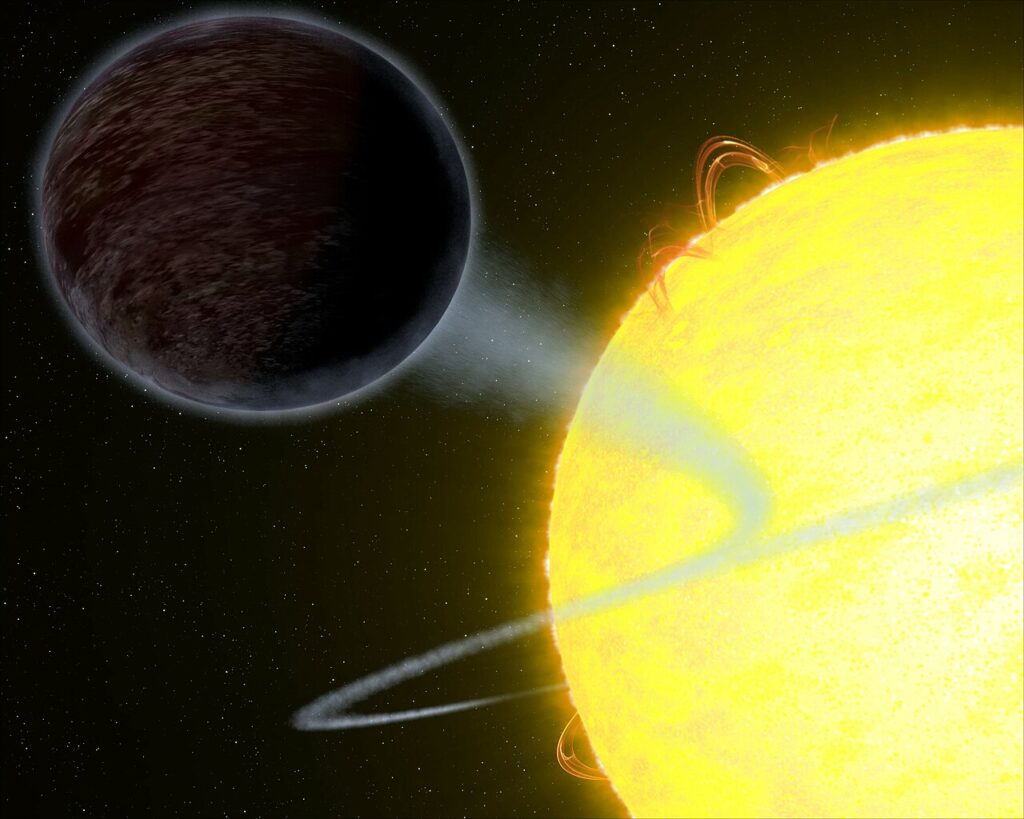An international team of researchers has published calculations of the fate of hot Jupiter WASP-12b. The available data suggests that the planet will die in just three million years.

The exoplanet WASP-12b was discovered in 2008. It is a gas giant orbiting a star of spectral class F, located at a distance of 870 light-years from Earth. Its radius is 1.9 times that of Jupiter, and its mass is 1.47 times. This gives an average density of only 0.26 g/cm3, which is four times less than the density of water.
This “bloat” is explained by the fact that the orbit of WASP-12b passes at a distance of only 3.5 million km from the parent star (it takes only one day for one orbit). Because of this, the atmosphere of the exoplanet is heated to a temperature of 2,300 °C, which is comparable to the surface temperatures of some cold red dwarfs. The fact that WASP-12b has an extremely low albedo also plays a role. It reflects only 6% of the light, which is why astronomers compare the color of the exoplanet with asphalt.
But the oddities of the WASP-12b do not end there. Back in 2010, astronomers found out that the exoplanet was deformed. After examining all possible options, they came to the conclusion that this was caused by the effects of tidal forces from the star, which literally tear WASP-12b apart. And this means that in the future it will be destroyed.
A team of researchers from the TASTE project decided to calculate the remaining lifetime of the gas giant. For this purpose, they used the results of new observations of the La Silla Observatory, as well as archival data for 12 years. Calculations have shown that WASP-12b will be torn apart and absorbed by its star in just 3 million years.
This is an important discovery. Prior to this, it was believed that such a scenario of exoplanet death was impossible for systems where the star was still on the main sequence and burning hydrogen.
Recall that astronomers recently discovered an exoplanet the size of Saturn.
According to https://phys.org
Follow us on Twitter to get the most interesting space news in time
https://twitter.comne/ust_magazi


